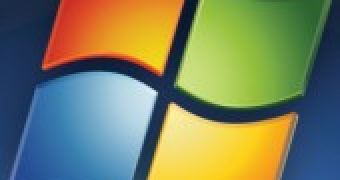Windows 8 is reportedly in the Milestone 3 (M3) stage of the development process, on its way to the Beta Build. There is no official word from Microsoft, but speculation points to the second half of 2011, around fall, for the public availability of Windows 8 Beta.
Supposedly, there will be a Windows 8 flavor tailored specifically to emerging form factors, including slates / Tablet PCs, whether they are powered by System on a Chip (ARM architectures) or by traditional processors.
Since Windows 8 is just at M3, there’s still plenty of time for the software giant to build the next generation of Windows in accordance with the evolution of technology and consumer preferences.
Earlier this week I read a post-PC blog post authored by Forrester’s Sarah Rotman Epps. I’ve already opined that I don’t believe for a fact that the Personal Computer is dead, or that the world of technology is in the post-PC evolutionary era.
Post-PC is used more as a handy moniker, and it does pack quite a wow factor on the consumer side. Strictly in terms of what’s under the hood, new form factors from smartphones to slates are in fact on their way to becoming PCs.
Sure, not traditional PCs, but PCs nonetheless. New machines that bundle the power of a computer with the inherent characteristics of new form factors.
Speaking of which, Epps enumerates some new characteristics that are becoming representatives of the shifting computing paradigm:
“• Stationary to ubiquitous. Contrast the experience of computing on a desktop PC, in one place with a clear start and finish time, to that of the anytime/anywhere computing done on a smartphone or tablet. Ubiquitous computing is also more context-aware computing, aided by sensors like accelerometers, gyroscopes, and geolocators in smartphones and tablets.
• Formal to casual. In contrast to PC interactions with a formal start and finish time marked by booting up and shutting down, instant-on/always-on computing on smartphones and tablets fills in-between moments like standing in line or watching TV.
• Arms-length to intimate. With desktops, computing is literally an arms-length activity. With portable form factors like laptops, netbooks, and tablets, computers become something consumers keep close to their body, and they use them in intimate places: The No. 1 place all three devices are used in the home is the living room, followed by an adult’s bedroom.
• Abstracted to physical. The mouse/keyboard paradigm relies on an abstracted interaction with content. Touchscreens like those on smartphones and tablets enable direct physical manipulation of content in two-dimensional space. Cameras with facial recognition, voice sensors, and motion sensors like those on the Microsoft Kinect for Xbox 360 permit an even wider range of physical interaction with devices, where a user’s body and voice become the controller.”
The PC is very much alive. But customers just need to take the old definition of a computer, slap concepts such as ubiquitous, casual, intimate, and physical on top, and it will help them better define the devices of today and tomorrow.
I do feel that there’s one concept that is missing from the enumeration of emerging computing characteristics above, one that I see as key to the success of these form factors: simplicity.
It certainly has a lot to do with the evolution of natural user interfaces, touch, voice, gestures, etc., but it also goes beyond that.
And this is something that Microsoft needs to work on with Windows 8, simplicity. Windows vNext is bound to feature a powerful NUI + GUI combination, enabling a new level of human – computer interaction.
But this needs to go deeper than the surface. As I’ve said before, not all consumers want or need the full Windows operating system on their device.
Long battery life, instant on and off, painless management, lightening performance are just some goals for the software giant to strive for with Windows 8.
If Microsoft thinks that customers want to buy a Windows 8 slate then go home, boot it in 30 seconds, install an antivirus; check nagging messages on the taskbar; dig through Control Panel for some obscure networking option; install all of their favorite Windows programs; back-up; clean the registry; deploy updates; reboot so that the updates finish installing; etc. then the company has completely missed the point.

 14 DAY TRIAL //
14 DAY TRIAL //